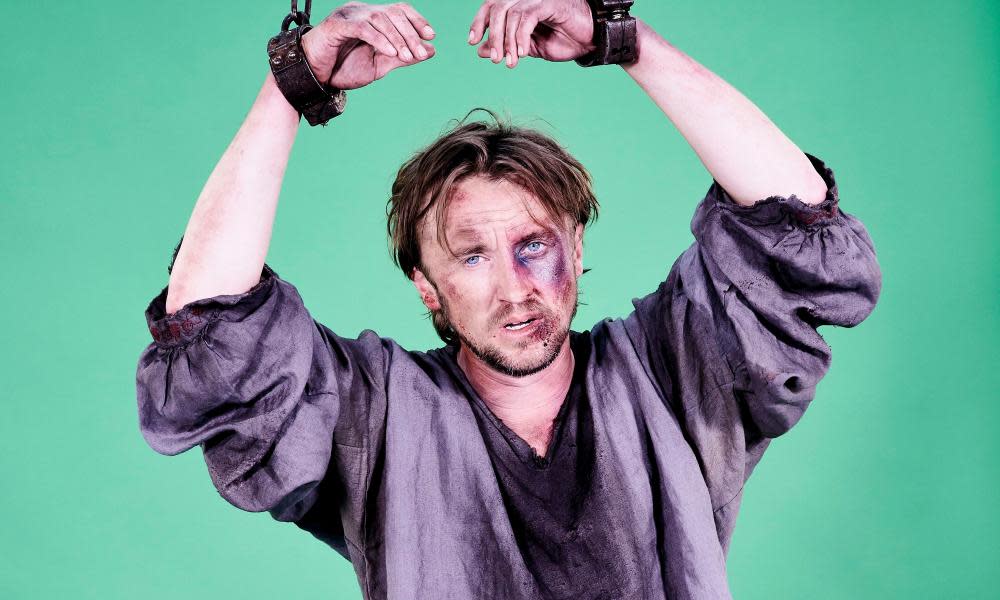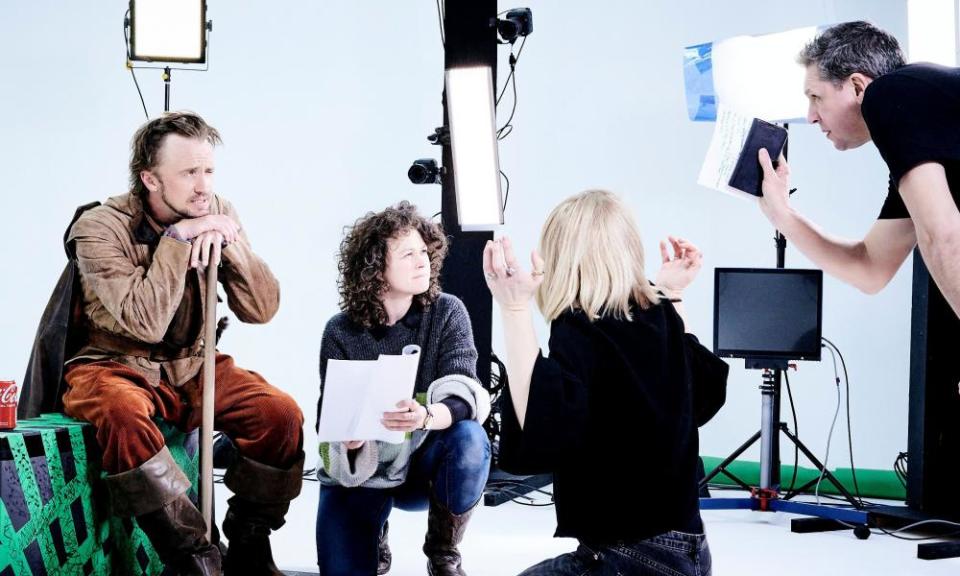‘A revolution that never happened’: The Gunpowder Plot at the Tower of London

Virtual reality and live performance combine in a show that asks audiences to consider if political violence is ever justifiable
In a series of vaults adjacent to the Tower of London that used to house fast-food restaurants and shops selling trinkets to tourists, a portal into Jacobean London is being constructed.
The Gunpowder Plot is an ambitious immersive experience, created by Layered Reality – the company behind the immersive The War of the Worlds – in collaboration with Historic Royal Palaces. It invites audiences to step back in time and engage with the events of 1605, when Guy Fawkes and a group of Catholic conspirators plotted to blow up parliament and King James I.
Danny Robins, the writer behind The Battersea Poltergeist podcast who was recently nominated for an Olivier award for his play 2:22 – A Ghost Story, describes it as “a seismic moment in British history – the revolution that never happened”. While the show employs different storytelling techniques, including video (Tom Felton, Draco Malfoy in the Harry Potter films, will play the digital role of Guy Fawkes), virtual reality and live performance, Robins says that at its heart is an exploration of the men behind the gunpowder plot and what motivated them to take such drastic action.
It is, he explains, about “a group of young activists who are being persecuted, who are seeing people that they love imprisoned, tortured, executed, and who want to change their world and want to fight against a government that feels unjust”.

In this sense, he says, it feels very contemporary. Now, as then, he explains, “we’re very divided along ideological lines”. The show addresses the implications of that, asking: “How far do you go to change your world?” In the show, groups of 16 people at a time are guided from room to room as actors propel them from scene to scene (people’s different mobility and access needs are addressed). While it contains plenty of action and adventure – there’s a scene inspired by the daring escape of the Jesuit priest John Gerard from the tower – and moments when you are obliged to hide from pursuers, the show ultimately hangs on an ethical dilemma about political violence and whether it is ever justifiable. Audience members are asked to decide who they will side with, the plotters or the crown, and their decision has an impact on their experience of the show.
Director Hannah Price was attracted by the challenge of telling this story in an engaging way that did not shy away from historical complexity. One of the things the show does is demonstrate just how devastating an impact such a blast would have had, the lives that would have been lost had they been successful.
Virtual reality has ‘this ability to make us feel like kids again – it’s a real magic lantern for our age’
Danny Robins
Guy Fawkes has become a symbol of rebellion, says Price. He is the face of hacker collective Anonymous. She hopes the show enables people to explore the choices he made and the reasons behind them in a way that feels current, “rather than abstracted through the lens of history”.
With a background in immersive storytelling and gaming as well as theatre, she hopes to make the audience feel as if they are the protagonists. “What they see, what they feel and how they interact with people have an impact on what happens.” The space plays a part of this. The vaults are part of the Tower of London estates, so not only are they incredibly atmospheric, but, “we really are separated from the people involved in this story just by time, not by location”.
When I visit the space in March, it is still in the process of being transformed. Prison cells, boat sheds and panelled Jacobean rooms are taking shape in various underground chambers, along with a bar and restaurant. Banks of 3D printers are creating brackets for lanterns. Historical accuracy has been prioritised as much as possible (a display at the end makes it clear where artistic licence has been applied). Alden Gregory, curator of buildings at Historic Royal Palaces, has taken on the role of historical adviser. What excites him particularly is the opportunity it will afford visitors to see the tower as it would have been in 1605, before later additions were made, and to virtually “reconstruct some of the lost buildings”.
Related: ‘I turned up as a snotty kid who looked right’: Tom Felton’s life after Harry Potter
Heritage spaces in the UK are increasingly engaging with new ways of making history come alive for their visitors. Historic Royal Palaces has collaborated with theatre companies before, such as Wildworks and Les Enfants Terribles, but this is its most ambitious project. The heritage sector was hit hard by the pandemic, affected in a similar way as live performance. With historic buildings closed to the public, many jobs were lost. It is necessary, says Robins, to find new ways of making people, particularly younger ones, want to visit these spaces; to make them feel relevant. “I wonder if we feel less connected to history than we did in the past?” he asks.
In 1605, plague remained a real threat – it delayed the opening of parliament. Londoners’ lives then, as now, were disrupted by disease. Robins hopes the show will give visitors a welcome boost after the routine imposed by lockdown. “I love the idea of making theatre feel adrenalised.” Virtual reality, he says, has “this ability to make us feel like kids again. It’s a real magic lantern for our age.” Yet virtual reality is only one aspect of what is a live, interactive experience, he stresses, one that starts when you leave daylight behind and descend beneath the streets.
London is a city of layers, steeped in history. Robins loves the idea of theatre that penetrates these layers and, in doing so, to step back in time. Immersive theatre, he says, is the “closest thing that we have right now to time travel”.
• The Gunpowder Plot is at Tower Vaults, London, from 20 May


